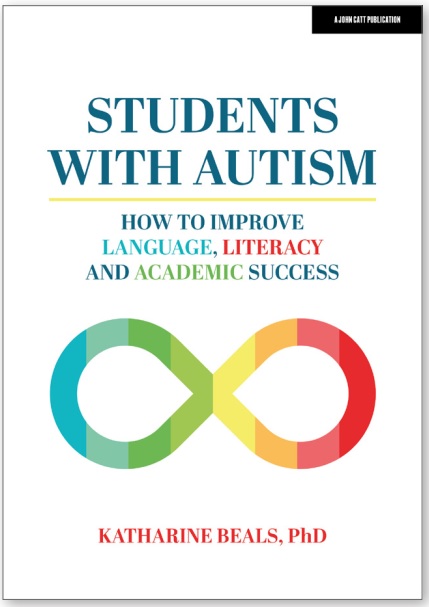"Left Brain Child"
education, "left brainers," and autism
| |
| Home |
| Students with Autism |
| Raising a Left Brain Child |
| Talks and Interviews |
| Books and Articles |
| Blog |
| SentenceWeaver |
|
Students with Autism describes the root causes of the language and learning challenges in autism, their various academic consequences, and a variety of tools and strategies for addressing them. Drawing on what the most current evidence shows about the nature of autism and which therapies are most successful, Beals discusses the implications for autism-friendly instruction in academic subjects. Complete acceptance of individuals on the autism spectrum means rethinking assumptions about autistic students, about how we teach expressive language, about how we teach reading comprehension, and about what and how we teach in the many K-12 classrooms attended by autistic students. |
|
"Finally, a book with a truly comprehensive focus on autism-friendly curriculum and instruction, rather than another re-hash of how to create an autism-friendly classroom! Beals provides the best description of teaching language and cognition to children and adults with autism I have seen to date. I heartily recommend her book to all autism ABA practitioners. .” "I gained great insight into how language and emotion are different in autism. As a person who thinks in pictures, it was interesting to learn more about how a trained linguist interprets autism. There are some parts of this book I disagree with but the first part about problems with joint attention and slow "sticky" shifting of attention were really helpful. “Student with Autism is a revelation. Katharine Beals tells us what is and is not affected by autism; what unique strengths autism brings to the world; and which programs and treatments will bring those strengths to the fore. Parents of the newly diagnosed will be heartened by Beals' explanation of the difference between empathy, which isn't affected in autism, and 'theory of mind,' which is. And her sections on 'sticky' attention and the relationship between verbal and nonverbal learning (a current topic in cognitive science) help us see the difference between autism itself and the downstream effects of having autism." “The modern classroom -- noisy, fluid, collaborative and unstructured -- can be overwhelming for students with autism. Katharine Beals explains how to teach to the strengths of children with autism at school and at home.” |
|
|
|
![]()
